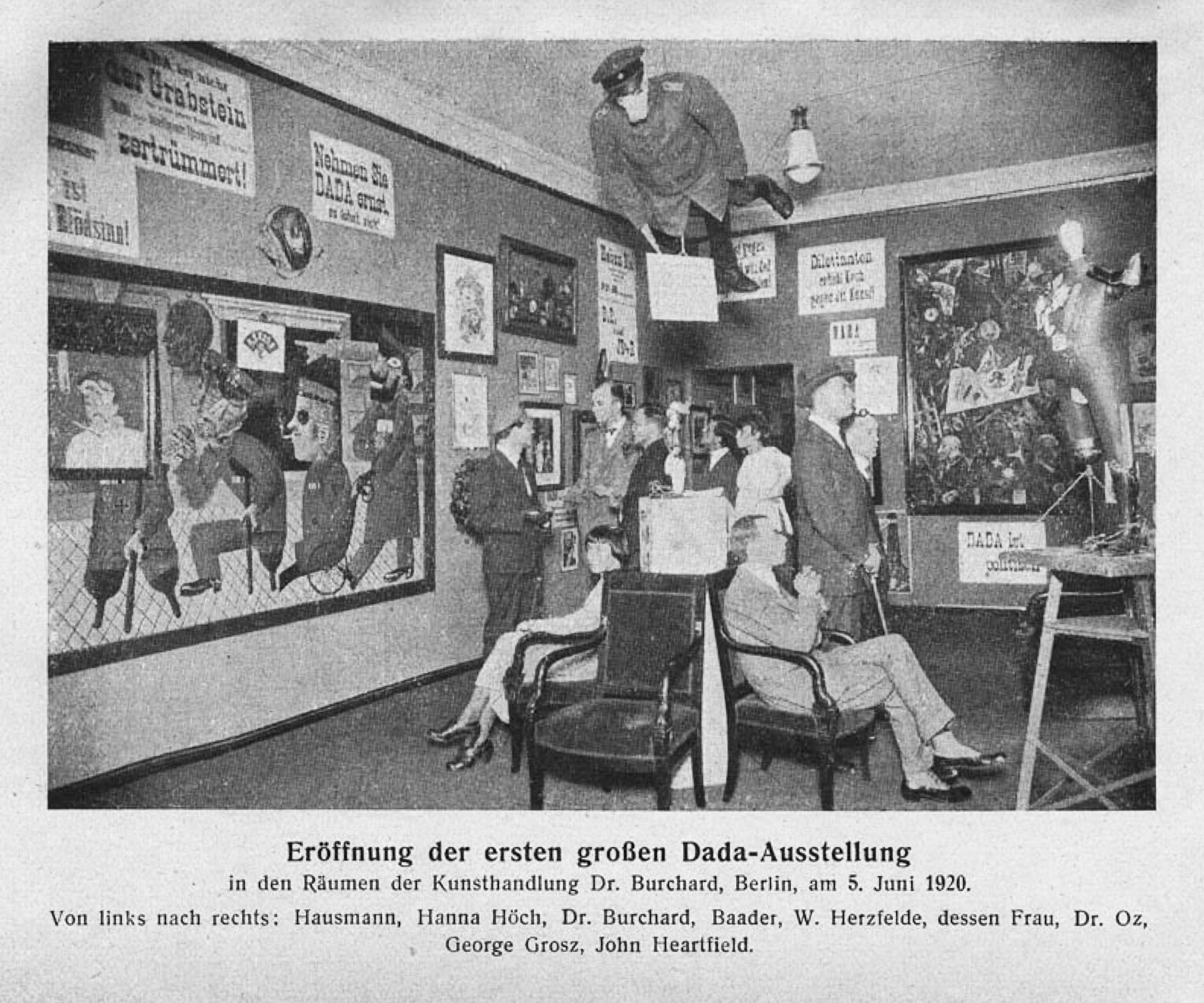Search Results - Dada
Dada
 Dada () or Dadaism was an anti-establishment art movement that developed in 1915 in the context of the Great War and the earlier anti-art movement. Early centers for dadaism included Zürich and Berlin. Within a few years, the movement had spread to New York City and a variety of artistic centers in Europe and Asia.
Dada () or Dadaism was an anti-establishment art movement that developed in 1915 in the context of the Great War and the earlier anti-art movement. Early centers for dadaism included Zürich and Berlin. Within a few years, the movement had spread to New York City and a variety of artistic centers in Europe and Asia. Within the umbrella of the movement, people used a wide variety of artistic forms to protest the logic, reason, and aestheticism of modern capitalism and modern war. To develop their protest, artists tended to make use of nonsense, irrationality, and an anti-bourgeois sensibility. The art of the movement began primarily as performance art, but eventually spanned visual, literary, and sound media, including collage, sound poetry, cut-up writing, and sculpture. Dadaist artists expressed their discontent toward violence, war, and nationalism and maintained political affinities with radical politics on the left-wing and far-left politics. The movement had no shared artistic style, although most artists had shown interest in the machine aesthetic.
There is no consensus on the origin of the movement's name; a common story is that the artist Richard Huelsenbeck slid a paper knife randomly into a dictionary, where it landed on "dada", a French term for a hobby horse. Others note it suggests the first words of a child, evoking a childishness and absurdity that appealed to the group. Still others speculate it might have been chosen to evoke a similar meaning (or no meaning at all) in any language, reflecting the movement's internationalism.
The roots of Dada lie in pre-war avant-garde. The term anti-art, a precursor to Dada, was coined by Marcel Duchamp around 1913 to characterize works that challenge accepted definitions of art. Cubism and the development of collage and abstract art would inform the movement's detachment from the constraints of reality and convention. The work of French poets, Italian Futurists, and German Expressionists would influence Dada's rejection of the correlation between words and meaning. Works such as ''Ubu Roi'' (1896) by Alfred Jarry and the ballet ''Parade'' (1916–17) by Erik Satie would be characterized as proto-Dadaist works. The Dada movement's principles were first collected in Hugo Ball's Dada Manifesto in 1916. Ball is seen as the founder of the Dada movement.
The Dadaist movement included public gatherings, demonstrations, and publication of art and literary journals. Passionate coverage of art, politics, and culture were topics often discussed in a variety of media. Key figures in the movement included Jean Arp, Johannes Baader, Hugo Ball, Marcel Duchamp, Max Ernst, Elsa von Freytag-Loringhoven, George Grosz, Raoul Hausmann, John Heartfield, Emmy Hennings, Hannah Höch, Richard Huelsenbeck, Francis Picabia, Man Ray, Hans Richter, Kurt Schwitters, Sophie Taeuber-Arp, Tristan Tzara, and Beatrice Wood, among others. The movement influenced later styles like the avant-garde and downtown music movements, and groups including Surrealism, ''nouveau réalisme'', pop art, and Fluxus. Provided by Wikipedia